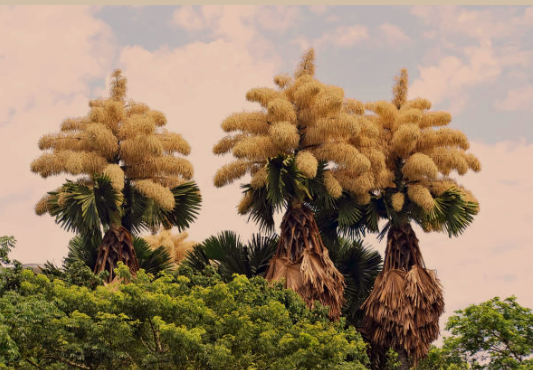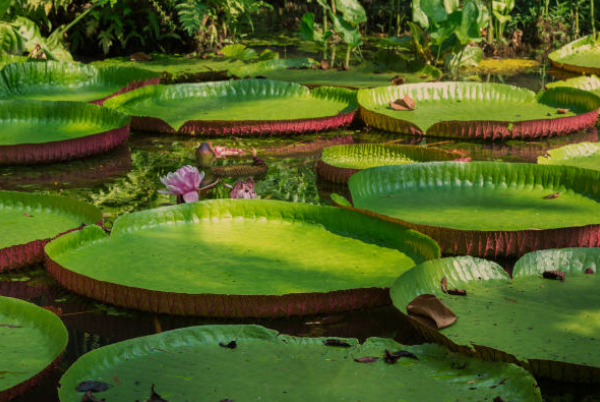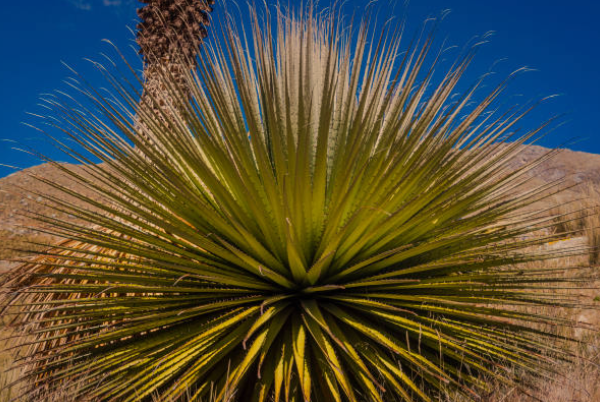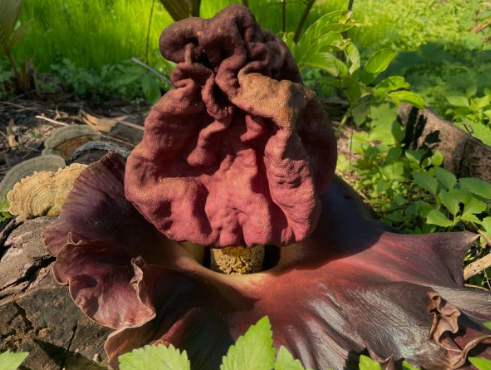Top 6 Largest Flowers in the World.
Nature amazes us with its incredible creations, and rare and exotic flowers are among the most fascinating.
The world of flowers is vast and diverse. Blooms vary greatly in size, color, and scent.
Some blooms stand out because of their extraordinary size.
The largest flowers are not only a marvel to behold.
They also have unique characteristics that set them apart from common blooms.
This article will explore the top 6 largest flowers.
We’ll go into their distinct features and what makes them so remarkable.
The Flower World of Giant Blooms
The world of botany is full of wonder, thanks to giant flowers.
These giant blooms are not just bigger versions of garden flowers.
They have special traits that help them live in certain places.
The biggest flowers, like the Rafflesia and Titan Arum, are rare and live in far-off, warm places.
Their huge size is just one reason they’re so interesting.
Some have the strongest smells in the plant world, helping to draw in pollinators.
Looking into the world of the largest flowers shows us the amazing variety in plants.
From the tall Talipot Palm to the huge leaves of the Giant Water Lily, each has unique features.
These help them survive and make more plants in their home.
Learning about these giant blooms not only sparks our curiosity about nature.
It also shows why we need to protect these and other amazing plants.
What Makes a Flower “Large”?
Figuring out what makes a flower “large” means looking into how we measure flower size.
There are many ways to measure a flower’s size.
Each method gives a different view of how big it is.
Size Measurement Methods
There are several ways to measure a flower’s size.
Diameter measurement is one, where we measure across the flower through its center.
Another way is to measure the circumference or the flower’s total size, including its height and width.
Diameter vs. Weight Considerations
When we talk about a flower’s size, we look at both diameter and weight.
Diameter tells us how wide the flower is.
Weight tells us how heavy it is and how dense it is.
For example, a flower might not be the biggest in diameter but could be very heavy because it’s dense.
Looking at both diameter and weight helps us understand a flower’s size better.
The Top6 Largest Flowers in the World
The largest flowers in the world are truly amazing.
We’re going to look at the top 6.
These flowers are not just big.
They also have unique features and live in special places.
The top 6 largest flowers are known for their size.
Some are huge in diameter, while others are very tall or heavy.
Let’s take a closer look at these incredible plants:
- Rafflesia Arnoldii: Known for its massive bloom
- Titan Arum: Famous for its height and rare blooming
- Talipot Palm: Notable for its large inflorescence
- Giant Water Lily: Recognized for its enormous leaves and flowers
- Puya raimondii: Distinguished by its towering flower spike
- Corpse Lily: Another rare and large Amorphophallus species
1. Rafflesia Arnoldii: The Corpse Flower

The Rafflesia Arnoldii, also known as the Corpse Flower, is one of the rarest flowers in the world.
It’s famous for its strong smell, which is like rotting flesh.
This has caught the eye of botanists and the public.
Physical Characteristics and Appearance
The Rafflesia Arnoldii is a large, parasitic plant without roots, stems, or leaves.
It’s one of the most unusual flowers out there. Its flower can grow up to 3 feet wide and weigh up to 24 pounds.
Native Habitat and Global Distribution
This flower comes from the rainforests of Southeast Asia, mainly Indonesia and Malaysia.
It’s rare because it blooms only a few times a year. Each bloom lasts about 5 to 7 days.
Fascinating Facts and Cultural Significance
The Rafflesia Arnoldii holds cultural and ecological value.
In some places, people think it has healing powers, but there’s no solid proof.
It’s also seen as a symbol of love and passion in some traditions.
| Characteristics | Description |
|---|---|
| Diameter | Up to 3 feet |
| Weight | Up to 24 pounds |
| Blooming Period | 5 to 7 days |
The Rafflesia Arnoldii is more than just a rare flower; it’s an adventure.
Its unique traits and short blooming time make it fascinating.
Efforts are being made to save this and other rare plants.
This way, future generations can also see its beauty and uniqueness.
2. Titan Arum (Amorphophallus titanum)

The Titan Arum is a rare sight, but it’s a botanical wonder that draws people from all over.
It’s famous for its huge flower, one of the biggest in the world.
Size, Structure, and Appearance
The Titan Arum’s flower can grow up to 10 feet tall. It has a deep red leaf-like structure and a yellowish-green center.
This makes it look like a giant cup.
The plant’s size and details are truly impressive.
The center of the flower has tiny, sterile flowers at the bottom and fertile ones at the top.
This setup is complex and helps with reproduction.
Natural Habitat and Cultivation
The Titan Arum comes from Sumatra’s rainforests in Indonesia. It loves humid, tropical places with rich soil.
Growing it outside its home is hard because of its specific needs.
But, botanical gardens worldwide have made it work. They create environments that match its natural home.
This helps in studying and saving this amazing plant.
The Notorious Smell and Blooming Cycle
The Titan Arum is known for its strong, smelly odor.
It smells like a corpse when it blooms. This smell attracts beetles and flies.
The bloom lasts only 24 to 48 hours.
When it blooms, many people visit gardens to see it.
The short time it blooms makes it even more special.
Key Characteristics of Titan Arum:
- Massive inflorescence, up to 10 feet tall
- Distinctive deep red spathe and yellowish-green spadix
- Potent, corpse-like odor during blooming
- Rare and brief blooming cycle
- Native to Sumatra, Indonesia
| Characteristics | Description | Measurement |
|---|---|---|
| Height of Inflorescence | Can grow up to | 10 feet (3 meters) |
| Blooming Duration | Typically lasts | 24 to 48 hours |
| Native Habitat | Found in | Rainforests of Sumatra, Indonesia |
3. Talipot Palm (Corypha umbraculifera)

The Talipot Palm, known as Corypha umbraculifera, is a huge palm tree species.
It is famous for its size and unique life cycle.
Found in Asia’s tropical areas, it has caught a lot of attention for its special traits.
Impressive Size and Structure
The Talipot Palm can grow up to 15 meters (49 feet) tall.
Its trunk is strong, holding up large, fan-shaped leaves.
These leaves can be up to 5 meters (16 feet) wide. Its impressive stature stands out in its natural habitats.
Geographic Distribution and Growing Conditions
Talipot Palms live in the tropical forests of South and Southeast Asia.
Countries like India, Sri Lanka, and Indonesia are home to them.
They love humid, tropical weather with lots of rain.
They need well-drained soil and some shade, mainly when they’re young.
Once-in-a-Lifetime Flowering Event
The Talipot Palm’s once-in-a-lifetime flowering event is truly amazing.
After growing for 30 to 80 years, it blooms with a massive inflorescence up to 6 meters (20 feet) tall.
This inflorescence has thousands of flowers.
After blooming, it produces many fruits, and then the palm dies, ending its life cycle.
4. Giant Water Lily (Victoria amazonica)

The Giant Water Lily, known as Victoria amazonica, is a wonder of nature in the Amazon Basin.
It’s famous for its huge leaves and stunning flowers.
These have amazed botanists and nature lovers for years.
Massive Leaves and Flower Structure
The Giant Water Lily’s leaves can reach up to 6 feet wide.
They can hold a lot of weight.
The leaves have a special edge that helps them stay afloat.
The flowers are just as impressive.
They bloom for several days and change from white to pink.
Amazon Basin Habitat and Adaptations
Victoria amazonica grows well in the Amazon Basin’s calm waters.
Its roots are in the muddy riverbed.
Its leaves and flowers float on the surface, getting lots of sunlight.
This helps the Giant Water Lily to thrive.
It can outcompete other plants for resources.
Remarkable Strength and Engineering Inspiration
The leaves of the Giant Water Lily are incredibly strong.
They can even hold the weight of small children.
This strength has inspired many engineers and designers.
They’ve studied the plant’s structure to create better materials and designs.
The Giant Water Lily is not just fascinating for botany. It’s also a source of inspiration for innovation.
The Giant Water Lily shows the amazing diversity and adaptability of aquatic plants.
Its size, unique features, and engineering inspiration make Victoria amazonica truly remarkable.
5. Puya raimondii (Queen of the Andes)

In the Andes, a plant called Puya raimondii grows high up. It’s known as the Queen of the Andes. It’s famous for its big flower and unique life cycle.
Towering Inflorescence and Plant Structure
Puya raimondii has an amazing flower that can grow up to 15 feet tall.
It’s one of the tallest flowers in the world. The plant is big, with sharp leaves that protect it from animals.
The towering inflorescence has thousands of flowers that bloom one after another.
This attracts many pollinators. Its big flower shows how well it has adapted to the Andes’ harsh weather.
High-Altitude Andean Habitat
Puya raimondii lives in the Andes Mountains, between 9,500 and 16,000 feet high.
It grows in bright sunlight, cold, and little rain. It has adapted to these tough conditions.
The plant has strong roots and waxy leaves to save water and stay warm. Its adaptations include:
- Deep roots to anchor and absorb moisture
- Waxy leaf coatings to prevent water loss
- A compact rosette structure to shield the plant’s core
Century-Long Growth and Brief Flowering
Puya raimondii lives for about 80 to 100 years.
It grows for decades before flowering. After it flowers, it usually dies.
This century-long growth period and brief flowering are unique.
The long life lets the plant make lots of seeds. This helps the species survive.
6. Corpse Lily (Amorphophallus gigas)

In the lush rainforests, a unique flower blooms: the Corpse Lily, or Amorphophallus gigas.
This rare flower is a wonder of nature. It amazes botanists and fans with its huge size and interesting traits.
Distinctive Features and Appearance
The Corpse Lily stands tall, often as high as some of the world’s biggest flowers.
It has a large, single bloom that comes from a single stem.
This makes it stand out from other flowers.
- Large, solitary inflorescence
- Impressive height, often comparable to other giant blooms
- Unique, spathe-and-spadix structure
Rainforest Origins and Current Range
The Corpse Lily grows in the rainforests, where it loves the humid, warm air.
It’s found in Southeast Asia, but it’s rare. It’s often grown in gardens to help protect it.
Similarities and Differences to Titan Arum
The Corpse Lily and the Titan Arum are both big and have unique shapes.
They both belong to the Amorphophallus genus.
But, the Corpse Lily has its own special looks and likes different places to live.
- Similar spathe-and-spadix structure
- Differences in size and coloration
- Variation in blooming frequency and habitat
Comprehensive Comparison of the World’s Largest Flowers
The world’s largest flowers are truly amazing.
They show us how nature can create such wonders.
We’ll look at their size, weight, how often they bloom, and other interesting facts.
Complete Size and Weight Data
The biggest flowers are quite different in size and weight.
For example, the Rafflesia arnoldii can be up to 3 feet wide and weigh 24 pounds.
On the other hand, the Titan arum can grow over 10 feet tall.
Maximum Diameter Measurements
The Rafflesia arnoldii is the largest single flower, reaching up to 3 feet in diameter.
The Titan arum also has inflorescences that can be just as big.
Record-Breaking Specimens
Some flowers, like the Titan arum, can grow to incredible sizes.
For instance, a Titan arum at the New York Botanical Garden was over 10 feet tall.
Blooming Frequency and Duration
How often these flowers bloom and for how long varies a lot.
The Titan arum blooms very rarely, sometimes only once every 7-10 years.
Seasonal Patterns
Some flowers, like the Talipot Palm, bloom at specific times.
They flower only once every 30-80 years.
Viewing Opportunities Worldwide
Many botanical gardens around the world let you see these rare flowers.
Places like the Royal Botanic Gardens, Kew, and the United States Botanic Garden offer these chances.
Scent Characteristics and Pollination Strategies
Many of the biggest flowers have unique smells.
These smells help them attract pollinators.
For example, the Titan arum’s strong, smelly odor is famous for attracting insects.
| Flower Name | Maximum Diameter | Blooming Frequency |
|---|---|---|
| Rafflesia arnoldii | 3 feet | Rare |
| Titan arum | 10 feet (inflorescence height) | 7-10 years |
| Talipot Palm | Up to 20 feet (inflorescence) | 30-80 years |
Conservation Status and Environmental Threats
As we marvel at the world’s largest flowers, we must also consider their conservation status.
These extraordinary blooms are not only a wonder to behold but are also facing significant environmental threats.
The world’s largest flowers are often found in fragile ecosystems.
These ecosystems are under threat from human activities and climate change.
Habitat destruction, pollution, and the introduction of invasive species are just a few of the challenges these plants face.
Endangered Species Among Giant Flowers
Several of the world’s largest flowers are considered endangered species.
For example, the Rafflesia arnoldii, known for its massive bloom, is threatened by habitat loss and degradation.
The Titan Arum is also vulnerable due to its limited geographic range and the degradation of its rainforest habitat.
Other giant flowers, like the Talipot Palm and Puya raimondii, are also at risk.
They face habitat destruction and climate change. Conservation efforts are essential to protect these species and their habitats.
Global Conservation Initiatives
Fortunately, there are numerous global conservation initiatives aimed at protecting these unique plants.
Organizations around the world are working to preserve habitats, cultivate these species in controlled environments, and raise awareness about their plight.
For instance, botanical gardens are playing a key role in the conservation of giant flowers.
They maintain collections and conduct research.
Conservation programs are also being implemented to protect the natural habitats of these plants, ensuring their survival for future generations.
Conclusion
The world’s largest flowers are a true marvel of nature.
They capture the attention of botanists and enthusiasts with their huge size and unique features.
From the rare Rafflesia arnoldii to the towering Puya raimondii, these flowers have evolved amazing adaptations to survive in their environments.
As we wrap up our look at the largest flowers, it’s clear they amaze us with their size and beauty.
They also show us how vital conservation efforts are. We must protect their habitats to ensure they continue to thrive.
Our journey through the world’s largest flowers has deepened our appreciation for nature.
It highlights the importance of keeping our planet’s biodiversity safe. We must work to preserve our planet’s wonders for future generations.



